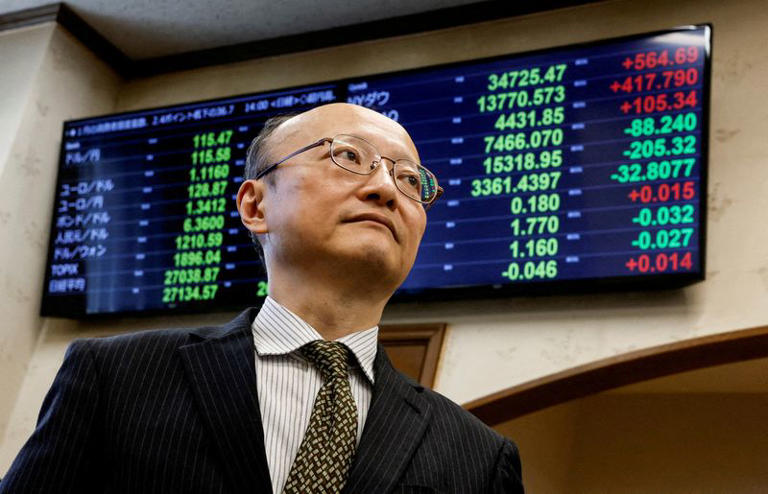The recent decline of the Japanese yen to nearly 160 per dollar has triggered strong reactions from Japanese officials, who are signaling their readiness to intervene in the market to prevent excessive volatility. Masato Kanda, Japan’s top currency diplomat, stated that while the government refrains from commenting on daily currency movements to avoid unintended market consequences, it remains vigilant and prepared to take action against significant fluctuations. This position was reinforced by Finance Minister Shunichi Suzuki, who stressed the importance of stable currency movements that are consistent with economic fundamentals.
The yen has been under sustained pressure due to the Bank of Japan’s decision earlier this month to continue its bond-buying stimulus program until its July meeting, a move that diverges sharply from the tightening monetary policies in the United States. The U.S. Federal Reserve’s higher interest rates have widened the interest rate differential between the two countries, contributing to the yen’s depreciation. As a result, the dollar traded at 159.87 yen early on Monday, approaching the psychologically significant threshold of 160 yen per dollar.
Despite previous interventions, such as the substantial outlay of 9.8 trillion yen (approximately $61.64 billion) to support the currency when it hit a 34-year low of 160.245 yen per dollar in April, the yen remains weak. Market participants widely perceive 160 yen per dollar as a critical point for potential intervention, though Kanda emphasized that there are no predetermined levels that would trigger government action.
Kanda also addressed Japan’s recent addition to the U.S. Treasury’s foreign exchange manipulation monitoring list, clarifying that this development has not limited Tokyo’s policy options. The U.S. Treasury’s report, released on Thursday, added Japan to its list, which includes six other countries. Kanda asserted that Japan retains the flexibility to ensure that exchange rates reflect economic fundamentals in a stable manner.
Currency intervention typically raises concerns when a country attempts to devalue its currency to gain an export advantage. However, Kanda emphasized that Japan’s current interventions are aimed at achieving the opposite effect – stabilizing the yen to prevent rapid and speculative-driven declines. He underscored the potential negative impacts on individuals, businesses, and households if such destabilizing moves are not addressed.
“We will firmly respond to moves that are too rapid or driven by speculators,” Kanda stated, highlighting the government’s commitment to mitigating adverse effects on the economy. By ensuring that foreign exchange rates move in a manner that reflects underlying economic conditions, Japanese authorities aim to maintain economic stability and protect the well-being of the country’s populace and enterprises.
In summary, Japan’s top currency officials are closely monitoring the yen’s movements and are prepared to intervene if necessary to counteract excessive fluctuations. Their focus is on maintaining stability in the foreign exchange market to support the broader economy, despite the challenges posed by differing monetary policies between Japan and the United States.
